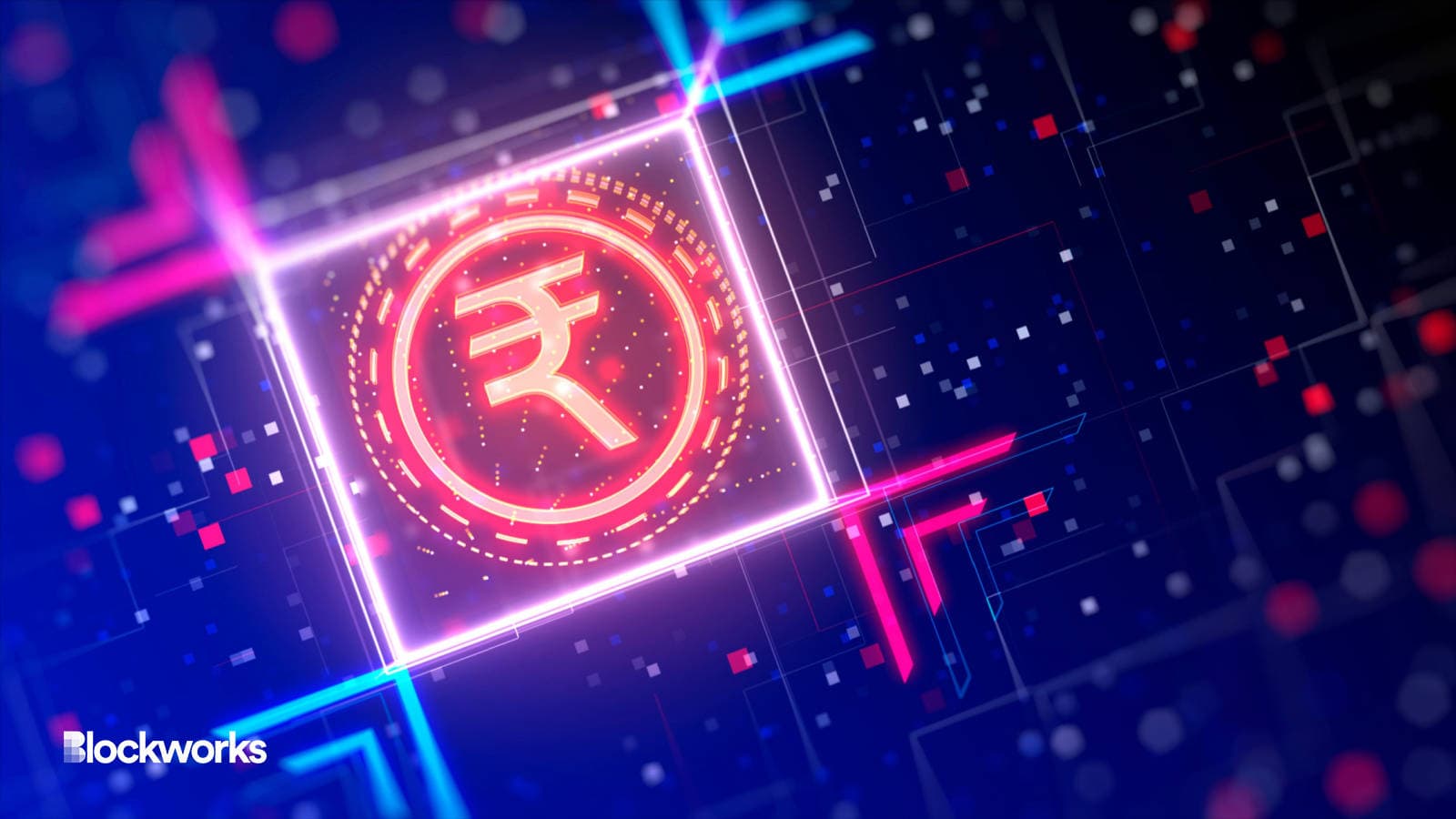India To Onboard More Banks For Digital Rupee Pilots
The Reserve Bank of India reported that results of both digital rupee pilots have so far been satisfactory and aligned with expectations

Aleksandra Sova/Shutterstock modified by Blockworks
India’s central bank is ramping up two ongoing central bank digital currency (CBDC) test projects, which study both retail and wholesale implementations of a digital rupee.
The Reserve Bank of India (RBI) says it’s now introducing a range of use cases and features for the pilots over the next financial year. The Reserve Bank launched the digital rupee — or e-Rupee — pilots last year.
There are plans to expand the retail pilot, bringing in a larger number of participating banks, according to the bank’s annual report published on May 30.
India’s wholesale CBDC tests commenced last November. The idea is to facilitate settlement of secondary market transactions in government securities using the digital rupee. Nine banks participated in the first phase.
The retail pilot kicked off in December, with the goal of using the digital rupee as a standin for physical currency notes. The central bank said eight banks are already involved in the retail pilot, and an additional five are in the process of joining.
“The results of both the pilots so far have been satisfactory and in line with expectations,” RBI said.
The issuance and redemption of the e-Rupee will be handled by the RBI, while the distribution and payment services will be entrusted to the banks.
“Settlement in central bank money would reduce transaction costs by pre-empting the need for settlement guarantee infrastructure or for collateral to mitigate settlement risk,” the bank said.
Before the pilots, a “concept note” on CBDC was released to increase awareness. In this note, the RBI said the e-Rupee would provide another option alongside traditional forms of money. While it is similar to physical banknotes, being digital makes it potentially easier, faster and cheaper to use, per the central bank.
RBI noted that India has become more resilient in the aftermath of the pandemic, largely due to the wave of digital transformation.
As of now, the specific technology behind the e-Rupee is unclear. The RBI still appears to be figuring out whether to opt for a regular centralized payments system, like WeChat and Venmo, or a distributed ledger technology (DLT) system.
Reuters reported in December that RBI was working with DLT, a term which mostly encompasses enterprise blockchain. But the official concept note states DLT systems, in their current form, are only viable in limited capacities. Blockworks has reached out to the RBI to learn more.
In any case, India is part of a small group of countries testing CBDCs, alongside Australia, China, Hong Kong, and Nigeria. Meanwhile, the US is inching closer to potentially deciding on formally proposing a Fed-issued digital dollar.
Get the news in your inbox. Explore Blockworks newsletters:
- The Breakdown: Decoding crypto and the markets. Daily.
- 0xResearch: Alpha in your inbox. Think like an analyst.






